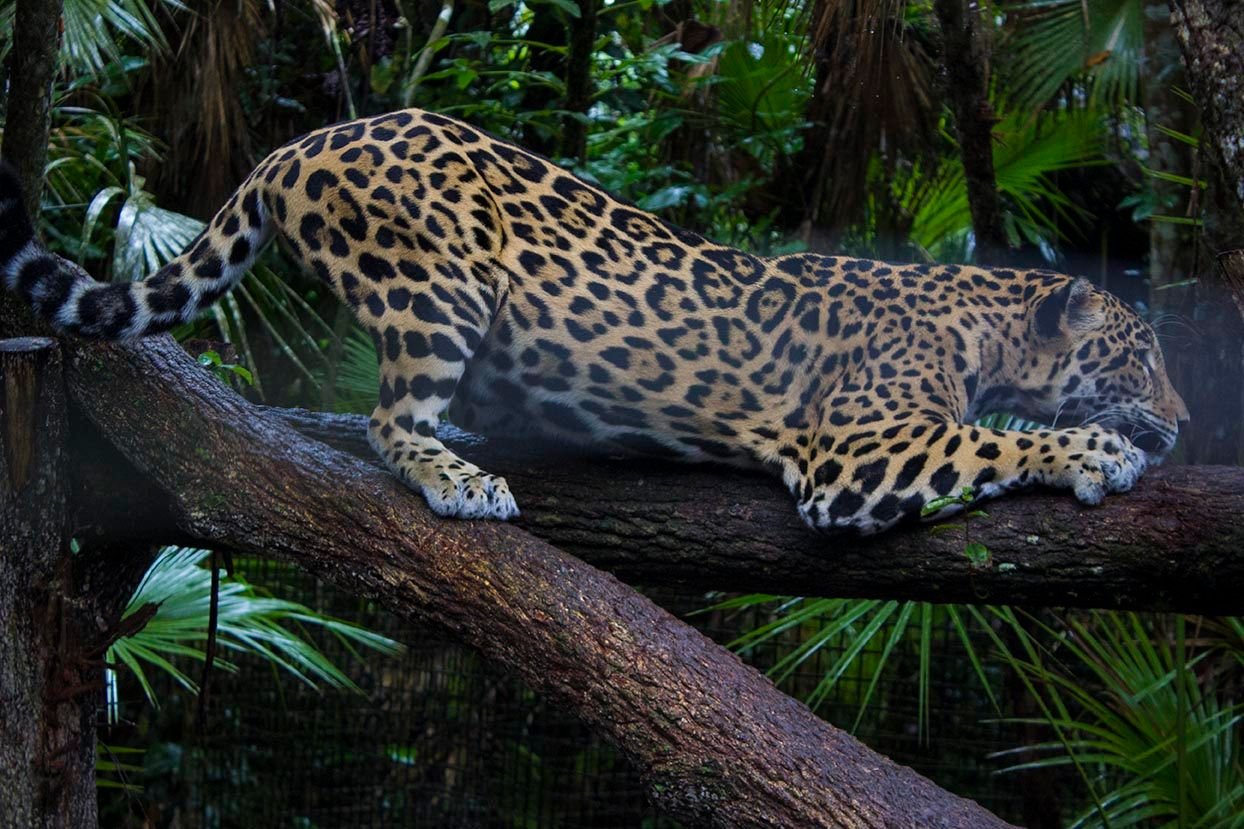Inspiring Animals - Jaguars!
Welcome to Inspiring Animals! This week, Inspire EdVentures will bring you on a journey to Central America to learn about the rainforest’s most awe-inspiring predator: the jaguar.
The jaguar (scientific name Panthera onca) is the largest wild cat found in North and South America, and the third-largest cat in the world! Jaguars can be found in a range of habitats from open grasslands to deep in the rainforest. These powerful felines hunt a variety of prey including birds, rodents, and deer, and have even been seen catching fish and battling with large reptiles like caimans.
One of the most stunning aspects of a jaguar is its beautiful coat, typically tan or golden in color with large black spots. These spots, called “rosettes,” are more than just decoration; they help to camouflage jaguars in their natural environments. Each individual jaguar has a completely unique spot pattern, often likened to a human’s fingerprints. These spots can be used to identify and track jaguars in the wild (including by the Inspire EdVentures team through the Inspire EdVentures Trail Camera Project!).
Because of their status as top predators and solitary nature, jaguars require large areas of undisturbed land to keep them happy and healthy. Unfortunately, human actions such as rainforest clearing for roads, dams, and agriculture can put jaguars’ homes in jeopardy and lead to conflict between jaguars and humans. The most common form of this conflict is when old, sick, or injured jaguars turn away from their natural prey to target livestock. A phenomenon known as habitat fragmentation- for example, when a large piece of undisturbed rainforest is divided into smaller pieces separated by roads or towns- can drive jaguars and the prey they depend on from areas where they used to live, further reducing their species’ range and population.
Listen to the Episode Now!
DID YOU KNOW?????
Jaguars are “true” big cats as members of the genus Panthera. This means that, unlike their fellow wild cats pumas or ocelots, jaguars can roar!
Jaguars have the strongest bite force relative to body size of any of the big cats. When hunting, a jaguar can often crush through their prey’s neck or skull in a single bite!
Unlike many other cats, jaguars feel right at home in the water and are very capable swimmers. They even hunt for aquatic prey like fish and turtles.
Black jaguars, sometimes called black panthers, appear to have completely black coats due to a rare condition known as melanism. These jaguars still have spot patterns just like their lighter counterparts; they’re just harder to see.


